This is an image of the planet Mercury.
Click on image for full size
Image from: NASA
Mercury's Craters
A wide variety of craters ranging in size from 100 meters to 1300 km
across can be seen in the
Mariner 10
images of Mercury's surface. These include: (1)
craters in young terrain, (2)
double craters, (3)
craters with rays of material
directed away from them ("ray craters"), (4)
craters with peaks in the
center, and (5)
craters with
smooth plains inside. The
largest crater on the surface of the planet is the
Caloris Basin.
You might also be interested in:

How did life evolve on Earth? The answer to this question can help us understand our past and prepare for our future. Although evolution provides credible and reliable answers, polls show that many people turn away from science, seeking other explanations with which they are more comfortable.
...more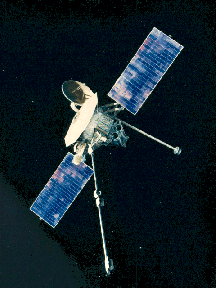
The Mariner 10 mission (USA) to Mercury was launched on November 3, 1973 and arrived at Mercury on March 29, 1974. The spacecraft made three separate passes by the planet, and obtained about 10,000 images
...more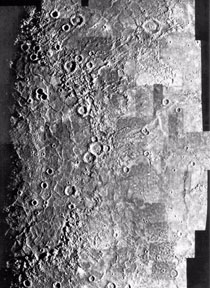
The Caloris Basin is the largest feature on the surface of Mercury. This crater was formed by the impact of a large meteorite in the early formation of the solar system. We only know what half of the
...more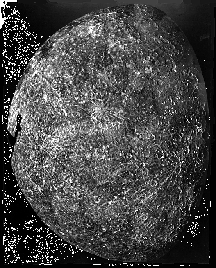
The surface of Mercury has numerous interesting features, including a variety of craters, ridges, and terrains ranging from heavily cratered to nearly crater free. These features, and their location across
...more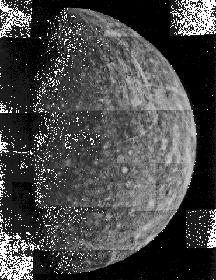
Images of the surface of Mercury obtained by Mariner 10 showed a planet covered with craters, looking very much like the Earth's Moon. During its three passes by the planet, Mariner 10 took pictures of
...more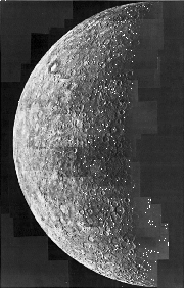
A wide variety of craters ranging in size from 100 meters to 1300 km across can be seen in the Mariner 10 images of Mercury's surface. These include: (1) craters in young terrain, (2) double craters,
...more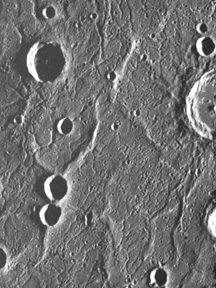
Wrinkle ridges on the surface of Mercury are thought to have been caused by the shrinking of the surface following the cooling and shrinking of the core of the planet. As the core cooled and shrank, the
...more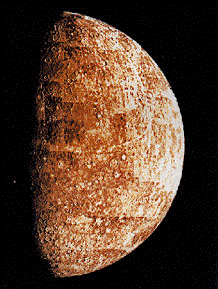
Mercury, like the other planets, is believed to have formed in the earliest stage of the evolution of the solar system as dust came together to form even larger clumps and eventually small planets or
...more














